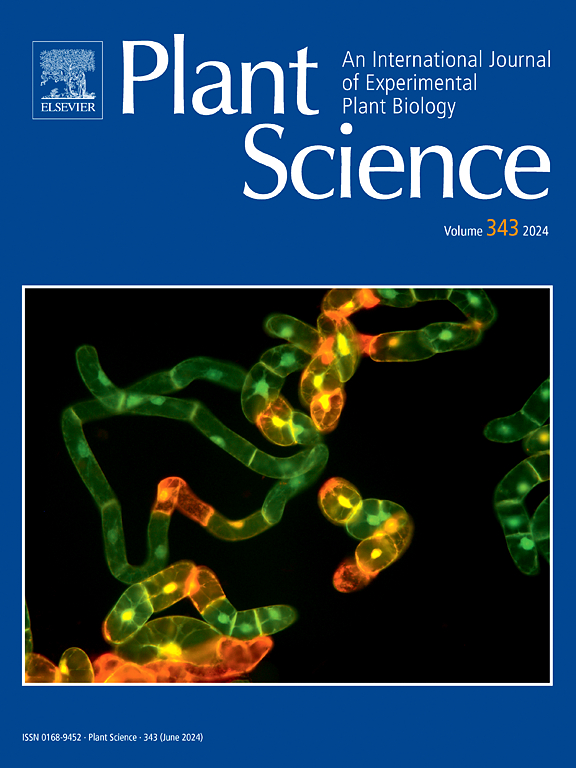人参皂苷生物合成的潜在参与者和调控因子:内生真菌PBF-08的作用
IF 4.2
2区 生物学
Q2 BIOCHEMISTRY & MOLECULAR BIOLOGY
引用次数: 0
摘要
人参被公认为是一种珍贵的中药,具有悠久的应用历史。由于其较高的药用价值,被广泛使用。人参皂苷是人参中的一类三萜次生代谢产物,被认为是人参的主要活性成分。植物内生菌是指居住在植物组织内,与寄主植物共同度过部分或全部生命周期,并与外界环境共同作用的微生物。人参内生菌作为与人参共生的微生物,具有提高产量、增加抗性、改善品质等多种功能,是具有潜在利用价值的重要微生物资源。在本研究中,我们筛选并鉴定了一株内生真菌PBF-08,该真菌具有产人参皂苷Rg2、Rg3和Re的能力。通过响应面法优化其发酵条件,显著提高了人参皂苷总产量。以PBF-08菌株作为激发子处理人参不定根,在最佳处理浓度和时间下,通过调控人参皂苷生物合成途径关键酶基因的表达,显著提高人参皂苷含量。广泛靶向的代谢组学分析表明,菌株PBF-08不仅具有完整而活跃的萜类生物合成途径,而且还能合成多种影响植物生长代谢的代谢产物。综上所述,菌株PBF-08在探索人参皂苷提取新方法和开发调节人参皂苷生物合成的微生物激发子方面具有潜在的应用价值。本文章由计算机程序翻译,如有差异,请以英文原文为准。
Potential participants and regulatory factors in ginsenoside biosynthesis of Panax ginseng C.A. Meyer: The role of endophytic fungus PBF-08
Panax ginseng C.A. Meyer was recognized as a precious traditional Chinese medicine with a long history of application. It is widely used due to its high medicinal value. Ginsenosides were identified as a group of triterpenoid secondary metabolites in ginseng and were considered the main active ingredients of ginseng. Plant endophytes were recognized as microorganisms that resided within plant tissues, coexisting with the host plant for part or all of their life cycle and interacting with the external environment together. Ginseng endophytes, as symbiotic microorganisms with ginseng, possess various functions such as enhancing yield, increasing resistance, and improving quality, making them an important microbial resource for potential utilization. In this study, we screened and identified an endophytic fungus PBF-08, which has the ability to produce ginsenosides Rg2, Rg3, and Re. By optimizing its fermentation conditions using the response surface methodology, the total ginsenoside yield was significantly increased. Additionally, ginseng adventitious roots were treated with strain PBF-08 as an elicitor, which significantly increased the ginsenoside content by regulating the expression of key enzyme genes in the ginsenoside biosynthesis pathway under optimal treatment concentration and time. Widely targeted metabolomic analysis revealed that strain PBF-08 not only possesses a complete and active terpenoid biosynthesis pathway but also synthesizes various metabolites that influence plant growth and metabolism. In summary, the strain PBF-08 was found to have potential application value in exploring new methods for obtaining ginsenosides and in developing microbial elicitors for regulating ginsenoside biosynthesis.
求助全文
通过发布文献求助,成功后即可免费获取论文全文。
去求助
来源期刊

Plant Science
生物-生化与分子生物学
CiteScore
9.10
自引率
1.90%
发文量
322
审稿时长
33 days
期刊介绍:
Plant Science will publish in the minimum of time, research manuscripts as well as commissioned reviews and commentaries recommended by its referees in all areas of experimental plant biology with emphasis in the broad areas of genomics, proteomics, biochemistry (including enzymology), physiology, cell biology, development, genetics, functional plant breeding, systems biology and the interaction of plants with the environment.
Manuscripts for full consideration should be written concisely and essentially as a final report. The main criterion for publication is that the manuscript must contain original and significant insights that lead to a better understanding of fundamental plant biology. Papers centering on plant cell culture should be of interest to a wide audience and methods employed result in a substantial improvement over existing established techniques and approaches. Methods papers are welcome only when the technique(s) described is novel or provides a major advancement of established protocols.
 求助内容:
求助内容: 应助结果提醒方式:
应助结果提醒方式:


